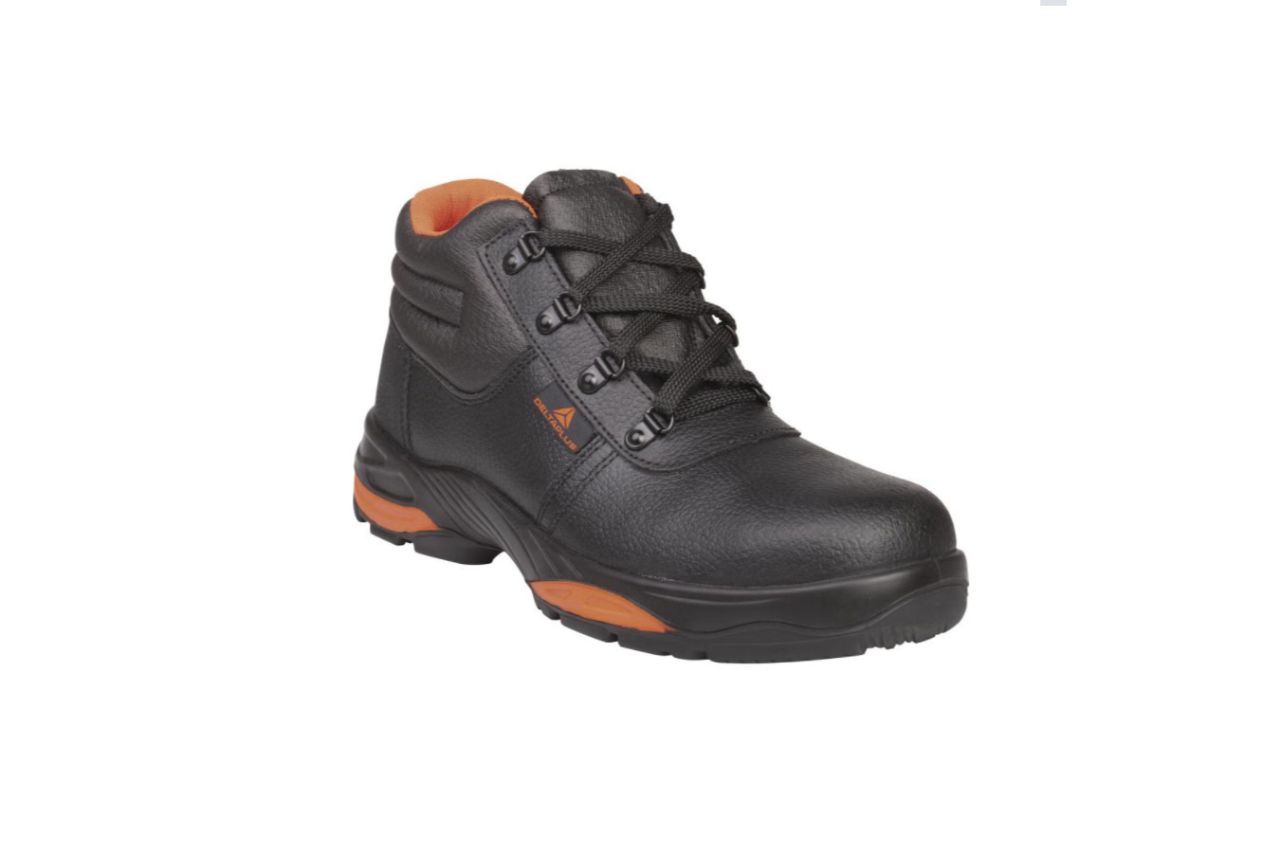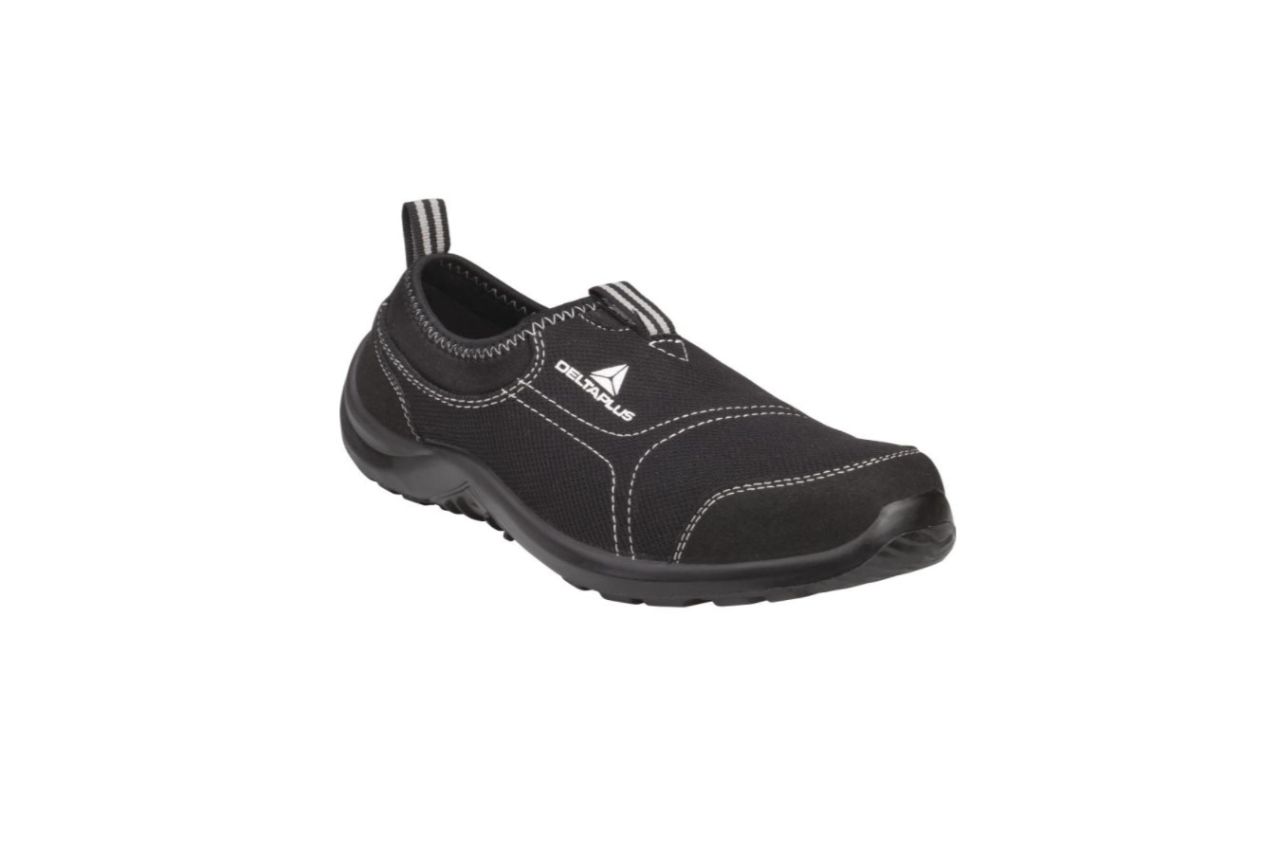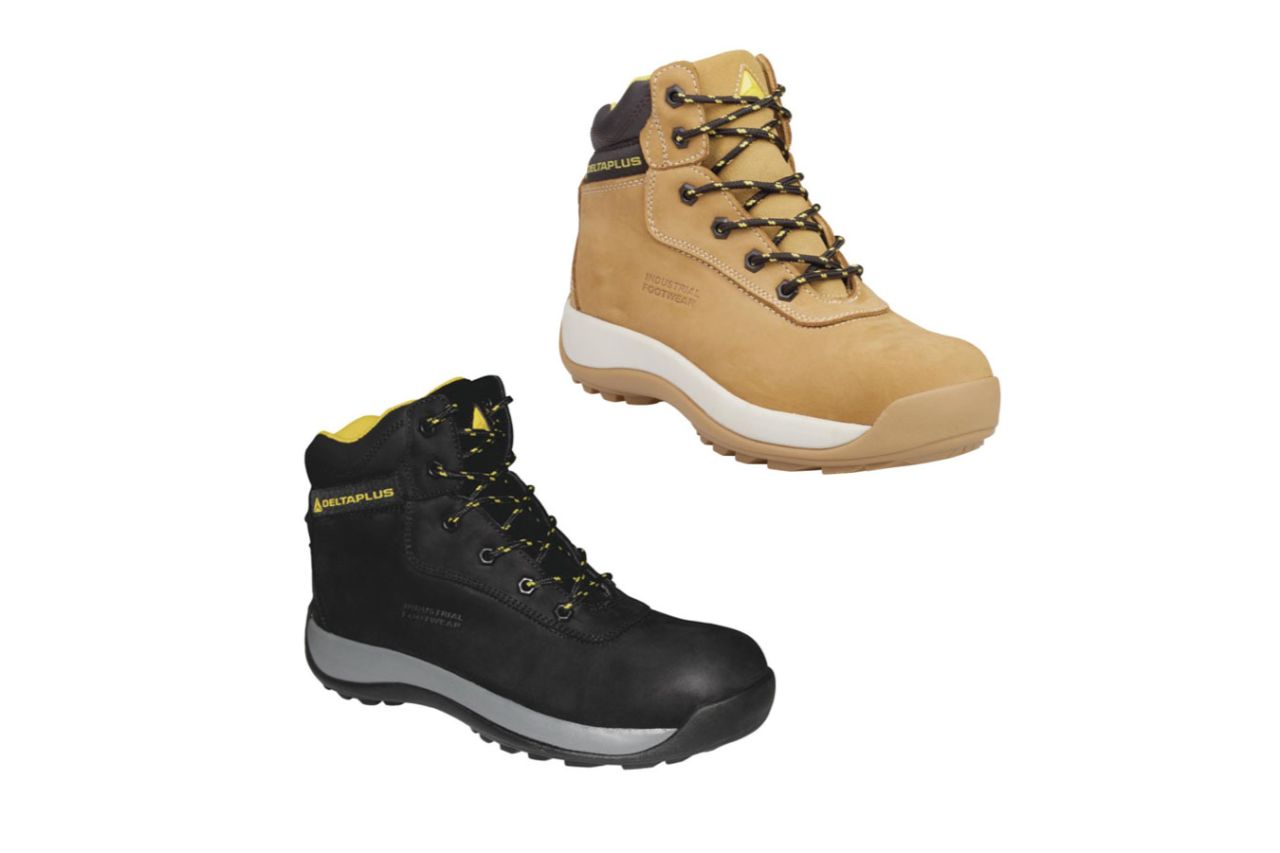
Slips, trips, and falls are some of the major occupational-related risks. Aside from that, worksites with sharp and falling objects can also increase the chances of foot injury for your workers. Apart from the usual helmets, gloves, and eye shields, safety footwear should be one of the essentials you purchase from your safety equipment supplier in the Philippines. Keep reading to learn about the different types of safety boots!

Because slips, trips, and falls are the most common risks at a worksite, most safety boots are made with slip-resistant materials. One of the materials with decent anti-slip features is polyurethane, which can be found in Dels Apparel’s safety footwear. It also makes any shoe comfortable to wear for hours.
For example, Delta Plus Asti is made with dual-density polyurethane for its outsole. It is also non-metallic, so it is suitable for work sites with metal detectors for security checks. For more features, this outsole material is also available in other safety shoes from Dels Apparel!
If you have employees that spend their duty outdoors most of the time, you need to consider the risks that come with the nature of the job. Whether they work as a gardener, security guard, or have duties in water plants and sewers, they need protection from standing water.
For example, if your workers need to walk through floods—whether it’s ankle-deep or higher—their feet can be protected from polluted water if they wear the Cruise by Dels Apparel. Because the rubber extends up to the mid-calf, it can cover the foot, ankle, and lower leg.

But aside from water protection, your workers might need a special material to protect their toes. For this reason, some work shoes are designed with toe caps to prevent injuries caused by external objects. They’re either made from metal or composite material.
One good example is the polyurethane bump cap which can be found in the Sault by Delta Plus. Aside from protecting the toes from sudden impact, it also makes the boots tougher and more durable. This increases the lifespan of the footwear and makes it a cost-effective choice.
Another part of the feet that should be protected is the bottom of the foot. Whether it’s running, jumping, or standing for long periods—different ground conditions can speed up the fatigue felt in the foot or even increase chances of injury. This is why you should consider shock-absorbing materials.
For added protection, your workers will also benefit from the Delta TW402 which has a cemented-PU midsole with a Panoshock® shock absorber. For this reason, it is designed for trek work. Other than that, it also has pre-molded bumpers at the front and back of the footwear for added protection against hard objects. For safety when climbing ladder rungs, the PU/Rubber Nitrile sole also has a reinforced grip. As a bonus, nitrile also has good resistance to heat.

Leather is also commonly worn as safety boots for general use. This material provides enhanced durability against environmental factors compared to other footwear. Thick leather also offers rigidity that is beneficial if you’re going to use it day in and day out.
But unlike ordinary leather, the Delta Plus Saga is made with Nubuck leather that is treated for water resistance. This way, it can be used in low-moisture environments as well. It also has a composite toe cap for extra protection!
Lastly, most workers in the road and construction industry also need protection from sharp objects. This is why puncture-resistant boots are typically made with steel or composite midsoles. Ordinary footwear could be punctured by materials such as nails and cause injuries to the feet of your employees. As a result, this can lead to dangerous infections and permanent foot damage.
The only disadvantage of steel midsoles is their chances of conducting cold, heat, and electricity.
It is the obligation of employers to provide their workers with personal protective wear required for the job. With the right work shoes, you can lessen the risks that could lead to injury in the workplace. Aside from this, custom-fit footwear will also make your employees more comfortable and therefore more productive.
But not just any pair will do the job. To help you find the right material that can protect your workers from the risks, you can contact Dels Apparel! As the carrier of Delta Plus Safety Equipment in the Philippines, they have different types of safety boots.